How to write a cover letter
Learn how to write a cover letter that will highlight your achievements, skills, and goals to hiring managers and recruiters.
Learn how to write a cover letter that will highlight your achievements, skills, and goals to hiring managers and recruiters.
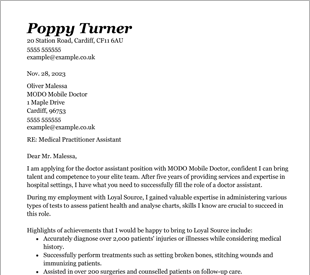
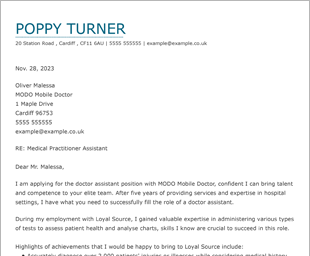
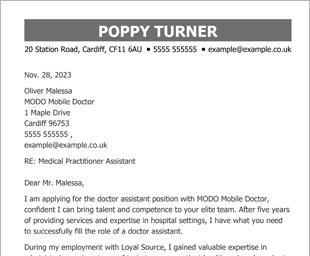
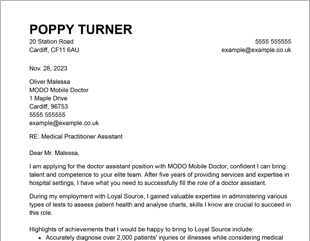
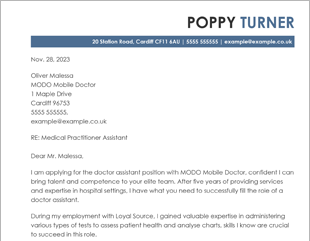
OUR USERS HAVE BEEN HIRED BY
A cover letter is a document submitted alongside your CV in a job application. It is composed in a much more conversational tone than your CV and gives you an opportunity to introduce yourself to the company with which you’re interested in working. A lot of hiring managers use cover letters to judge a candidate’s personality and written communication skills.
A cover letter is meant to enhance, not replace, your CV as part of your job application. It is vital to not just repeat what is in your CV. How can you write a cover letter that shares your expertise and gets you the job you deserve?
In this article, we’ll share:
You should always include a cover letter with your CV when applying for jobs because it provides an introduction to who you are. A cover letter can show hiring managers why you are the perfect applicant for the role by highlighting relevant talents and skills from your CV.
A cover letter can demonstrate how your individual blend of abilities and experience corresponds to a role’s key requirements. It is your opportunity to demonstrate a clear association between your knowledge, experience, and abilities and the needs of the business. Try our cover letter builder to easily create yours today.
Before the actual cover letter writing begins, you must conduct research by thoroughly reading the job description. While researching, keep the following in mind:
Your cover letter’s tone should be professional, friendly, and upbeat, but it’s important not to be too formal. You want to convey that you’re excited about the position and admire the business. You should also use the letter to market yourself and your skills positively.
If possible, match the tone of your cover letter to the tone of the company you are applying to. If you’re applying for a more laid-back business, you might want to be more friendly in your letter. In contrast, if the company you are applying for is more formal, you should aim to sound professional and focused.
When it comes to the length of a cover letter, recruiters generally agree that cover letters should be no more than one A4 page long and consist of three to five concise paragraphs. Cover letters should not be confused with personal statements, which are shorter and appear on your CV itself.
You should craft a unique cover letter for each new job application. Tailor each cover letter section to answer questions and demonstrate the skills and qualities employers are mentioning in the job advert. Before you begin writing using the section guides below, note that cover letters:
Any decent cover letter template will include a header. Include contact information such as:
A good cover letter will include an opening salutation that addresses the hiring manager by name. If you don’t know their name, go with “Dear Hiring Manager” or “Dear Sir or Madam.” “To Whom It May Concern” is considered old-fashioned.
After your opening salutation, the first sentence of the letter should explain why you’re writing it. Start by sharing the position you are applying for, where you saw it listed, and when you are available to start work. The first paragraph should grab the reader’s attention. It’s your chance to make a great first impression.
In the body, highlight relevant work experience and illustrate how your relevant skills and talents match the job description’s precise needs. Summarise any extra strengths and explain how they can help the organisation. In short, tell the recruiter why you’re the perfect candidate and the right person for the job.
Explain why you’re qualified for the position, what drew you to this line of work, why you want to work for the company, and what you can bring to the organisation. This is an excellent opportunity to demonstrate your understanding of the company.
This is also your chance to highlight what you can accomplish for the company. Outline your professional objectives, while keeping them relevant to the position you’re going for, and expand on important aspects in your CV. Always provide examples to back up your talents. You might want to head to the company website to get some inspiration for this.
Start to wrap up your letter by reaffirming your interest in the position and why you’d be a good fit for it. Finish off your cover letter with a call to action. This is where you can ask the hiring manager to take action, such as asking to meet for an interview. Sign off in a professional manner.
Once completed, go over the letter and remove unnecessary words and sentences. Don’t waste space by repeating what’s already on your CV.
Thorough proofing is one of the most crucial steps in writing a cover letter. Before submitting your cover letter, read it through numerous times for spelling, grammar, and punctuation mistakes. Reading the letter out loud can help you spot incorrect phrases. Double-check the spelling of names.
You could also ask a friend or family member to check over your cover letter before you send it. We all tend to overlook common errors from time to time, so a fresh pair of eyes can catch mistakes you may have missed.
The cover letter examples at CVHelp show you what recruiters in your sector are seeking right now. They’ll also provide you tips on how to word your cover letter, organise it, and what to emphasise. Get your job search off to a good start with the experts at CVHelp!
Job seekers should always write a cover letter since this is one of the key ways you can make an impression during the application process. Human resources departments often won’t accept applications without one anyway. A cover letter is your chance to highlight relevant experience and skills and establish credibility, but the ideal cover letter will also reflect your personality.
You should always take time to customise your cover letter for the specific job advert. Generic cover letters bore recruiters, so you should avoid clichés. A great cover letter will truly express why this is your dream job and reference specifics regarding company culture or other elements of the job description, and how you can fit in.
You can find plenty of help with your cover letter writing online at CVHelp. Our cover letter builder guides you through every step, while cover letter examples are there for your inspiration. We also have plenty of guidance for your CV writing, too.
We personalize your experience.
We use cookies in our website to ensure we give you the best experience, get to know our users and deliver better marketing. For this purpose, we may share the information collected with third parties. By clicking “Allow cookies” you give us your consent to use all cookies. If you prefer to manage your cookies click on the “Manage cookies” link below.